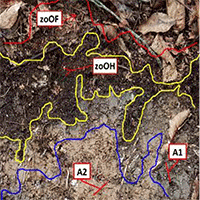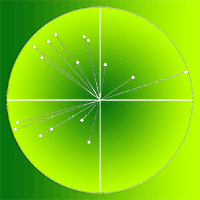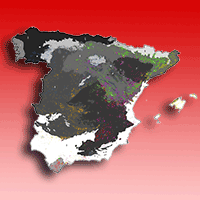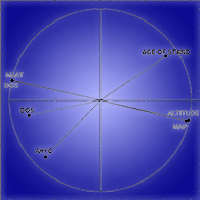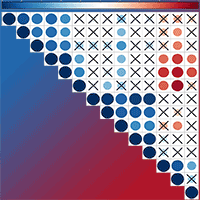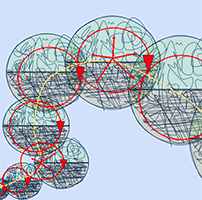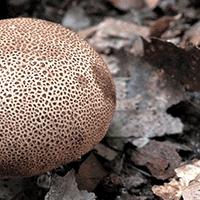
Evaluating humus forms variation in an unmanaged mixed beech forest using two different classification methods
iForest - Biogeosciences and Forestry, Volume 5, Issue 5, Pages 272-275 (2012)
doi: https://doi.org/10.3832/ifor0632-005
Published: Oct 24, 2012 - Copyright © 2012 SISEF
Technical Reports
Abstract
Humus is an important part of terrestrial ecosystems and can be considered as an indicator of ecosystem functioning status. Morphologic method is an inexpensive and easy way to study humus forms. This study investigated two morphological methods that have been applied in beech stands of Hyrcanian forest and compared them to assess which one is more appropriate for these ecosystems. Therefore an unmanaged beech stand was selected and 320 humus profiles were considered in it. In each profile the humus form was determined as to suborder level according to two morphological methods. The results showed that the average thickness of organic and organo-mineral horizons (OL, OF, OH and Ah) in the study site was 2, 0.6, 0.3 and 3.6 cm, respectively. Also the two different morphological methods used in the study site had different functions and outputs. According to both methods the Mull order was the dominant humus form in the study site. The number of humus suborders found in the study site was different in the two methods and indicates their different ability in describing humus forms in the study site
Keywords
Humus Classification, Mixed Beech Forests, Hyrcanian Forest, Organic Horizons
Authors’ Info
Authors’ address
H Habashi
Faculty of Forest Sciences, Gorgan University of Agricultural Sciences and Natural Resources, Gorgan (Iran)
Corresponding author
Paper Info
Citation
Waez-Mousavi SM, Habashi H (2012). Evaluating humus forms variation in an unmanaged mixed beech forest using two different classification methods. iForest 5: 272-275. - doi: 10.3832/ifor0632-005
Academic Editor
Alberto Santini
Paper history
Received: Dec 04, 2011
Accepted: Sep 27, 2012
First online: Oct 24, 2012
Publication Date: Oct 30, 2012
Publication Time: 0.90 months
Copyright Information
© SISEF - The Italian Society of Silviculture and Forest Ecology 2012
Open Access
This article is distributed under the terms of the Creative Commons Attribution-Non Commercial 4.0 International (https://creativecommons.org/licenses/by-nc/4.0/), which permits unrestricted use, distribution, and reproduction in any medium, provided you give appropriate credit to the original author(s) and the source, provide a link to the Creative Commons license, and indicate if changes were made.
Web Metrics
Breakdown by View Type
Article Usage
Total Article Views: 57202
(from publication date up to now)
Breakdown by View Type
HTML Page Views: 48565
Abstract Page Views: 2880
PDF Downloads: 4226
Citation/Reference Downloads: 15
XML Downloads: 1516
Web Metrics
Days since publication: 4800
Overall contacts: 57202
Avg. contacts per week: 83.42
Citation Metrics
Article Citations
Article citations are based on data periodically collected from the Clarivate Web of Science web site
(last update: Mar 2025)
Total number of cites (since 2012): 8
Average cites per year: 0.57
Publication Metrics
by Dimensions ©
Articles citing this article
List of the papers citing this article based on CrossRef Cited-by.
References
Towards a taxonomic classification of humus forms. Forest Science Monograph 29: 1-48.
Gscholar
Relationship between soil properties and spatial pattern of trees and tree groups in mixed beech forest, Shast Kalate, Gorgan. PhD Thesis, Faculty of Natural Resources and Marine sciences, Tarbiat Modares University, Iran, pp. 101.
Gscholar
Terrestrial humus forms: ecological relevance and classification. In: “European atlas of soil biodiversity” (Jefferey S, Gardi C, Jones A, Montanarella L, Marmo, L Miko L, Ritz K, Peres G, Rombke J, Van Der Putten WH eds). Publication Office of the European Union, cat. no. LB-NA-24375-EN-C, European Commission, Luxembourg, pp. 14-15.
Gscholar
Forests of Iran. Technical Publication No. 339, Research Institute of Forests and Rangelands, Tehran, Iran, pp. 28.
Gscholar
Variation of humus forms and nutrient properties in pure and mixed beech stands in north of Iran. In: Proceeding of the "7th International beech symposium, improvement and silviculture of beech" (Sagheb-Talebi Kh, Madsen P, Terazawa K eds). Tehran (Iran), 10-15 May 2004. Research Institute of Forest and Rangelands, Tehran, Iran, pp. 105-113.
Gscholar
Gap size effect on microclimate and soil moisture. In: “Forest filled with gaps. Effects of gap size on water and nutrient cycling in tropical rain forest. A Study in Guyana” (Van Dam O ed ). PhD Thesis, Utrecht University, Utrecht, the Netherlands, pp. 208.
Gscholar
Field guide humus forms, description and classification of humus forms for ecological applications. Research Institute for the Green Environment, Alterra, Wageningen, The Netherlands, pp. 92.
Gscholar
Effects of gap size and shape on humus forms, with regard to landform elements, in Shast-kalate forest, Gorgan, Iran. MSc Thesis, Faculty of Forest sciences, Gorgan University of Agricultural Sciences and Natural Resources, Tehran, Iran, pp. 63.
Gscholar

